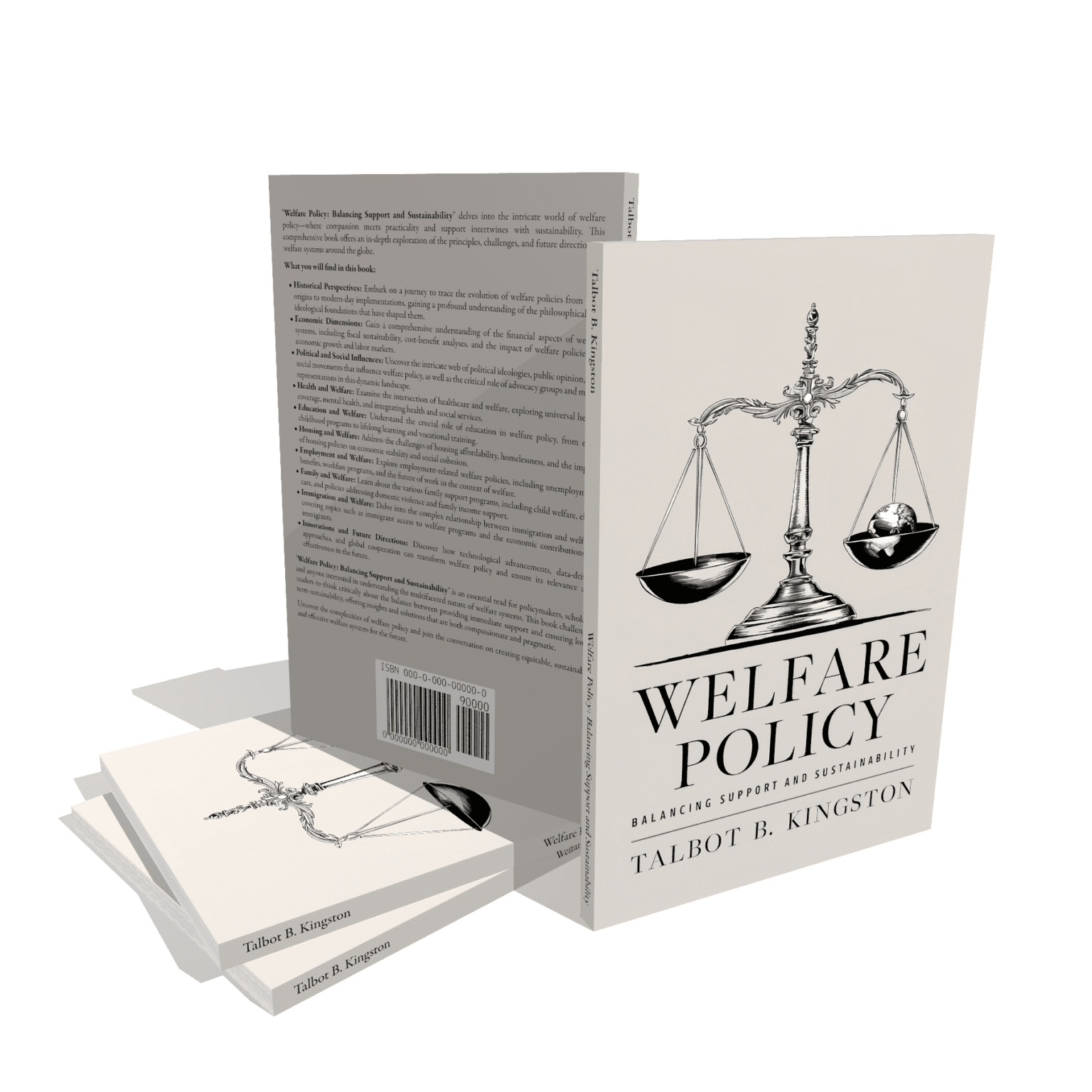Welfare Policy Balancing Support and Sustainability – Complete Guide to Modern Welfare Systems

Welfare policy challenges face every modern society as governments struggle to balance immediate support needs with long-term fiscal sustainability. If you’ve ever wondered how countries can provide essential services without bankrupting their treasuries, this comprehensive analysis holds the answers. “Welfare Policy: Balancing Support and Sustainability” by Talbot B. Kingston offers an evidence-based examination of contemporary welfare systems, exploring how effective policy design can create resilient communities while promoting both enhanced self-sufficiency and fiscal responsibility.
This essential guide dives deep into the complex intersection of welfare policy development, economic analysis, and social impact assessment. Unlike generic policy textbooks, Kingston’s work provides practical frameworks for understanding how historical patterns inform current debates and why adaptive solutions are crucial for addressing modern welfare challenges effectively.
What You’ll Discover
- Historical Evolution Analysis: Master the key turning points that shaped today’s welfare frameworks and learn how past policy decisions impact current systems
- Evidence-Based Decision Making: Discover proven methodologies for assessing fiscal sustainability while meeting vulnerable population needs effectively
- Economic Dimension Strategies: Learn comprehensive approaches to balancing immediate support requirements with long-term financial viability constraints
- Political and Social Influence Mapping: Overcome common policy formulation obstacles by understanding the complex forces that shape welfare legislation
- Cross-Sector Integration Techniques: Transform your understanding of how welfare intersects with health, education, and employment systems for maximum impact
- Sustainable Solutions Framework: Implement adaptive policies that respond effectively to changing economic conditions and demographic shifts
Why This Book Matters
Welfare policy sustainability represents one of the most pressing challenges facing governments worldwide. This comprehensive analysis equips policymakers, students, and concerned citizens with the analytical tools necessary for crafting effective welfare policies that meet contemporary challenges while ensuring long-term viability. The evidence-based approach prevents common pitfalls that lead to dependency cycles and fiscal strain.
Kingston’s expertise shines through in his examination of competing interests and demographic trends that complicate policy development. Rather than offering simplistic solutions, this guide provides nuanced perspectives on how social factors influence policy effectiveness, enabling readers to engage in informed discussions about welfare reform and advocate for sustainable solutions in their communities.
Key Features
This comprehensive ebook spans multiple detailed chapters covering historical welfare evolution, economic analysis, and contemporary policy challenges. Available as an instant digital download, you’ll receive immediate access to in-depth case studies, analytical frameworks, and evidence-based research findings. The format allows for easy reading on any device, with printable sections for reference during policy discussions. Also available as audiobook on Google Play Books and Spotify for convenient listening during commutes or while researching related policy topics.
Frequently Asked Questions
How does this welfare policy guide differ from academic textbooks?
Unlike theoretical academic texts, this book focuses on practical applications and real-world policy implications. Kingston presents evidence-based analyses that address contemporary welfare challenges while providing actionable frameworks for policy development. The writing style remains accessible to non-academics while maintaining analytical rigor essential for serious policy discussion.
What makes this approach to welfare policy analysis unique and effective?
The book’s strength lies in its comprehensive examination of interconnected factors affecting welfare systems. Rather than examining policies in isolation, Kingston explores how economic, political, and social forces interact to shape policy outcomes. This multifaceted approach enables readers to understand complex welfare dynamics and develop more effective solutions.
Is this welfare policy analysis relevant for different country contexts?
Absolutely. While specific policy examples may vary, the analytical frameworks and evidence-based methodologies presented apply across different governmental systems. The focus on balancing support with sustainability addresses universal challenges faced by welfare systems worldwide, making the insights broadly applicable for policy development.
Get Your Copy Today
Transform your understanding of welfare policy with this comprehensive analytical guide. Available for instant download at just $6.99, this ebook provides exceptional value compared to expensive policy courses or consulting services. Also available as audiobook on Google Play Books and Spotify for convenient listening during research or professional development. Purchase your copy through all major ebook retailers including Apple Books, Barnes & Noble, and Kobo to begin mastering effective welfare policy analysis today.
Watch the Video Review

